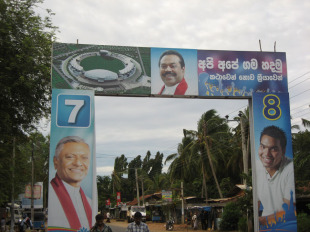Fishing town to financial biggie
The people of Hambantota are dreaming big as the sleepy hamlet looks to its port and cricket ground to spark development in the region

The Mahinda Rajapaksa International Cricket Stadium in Hambantota district, just off the south-eastern coast of Sri Lanka, is an anomaly among venues for the 2011 World Cup. Most other grounds for cricket's showpiece event are in big urban centres like Chennai, Colombo and Chittagong, but the closest settlement to the Hambantota stadium is Sooriyawewa, a nondescript, largely one-street village eight kilometres away.
It is an odd location for one of the two splashy new stadiums (the other is in Pallekele, near Kandy) being built for the World Cup in Sri Lanka, both completely owned by the country's cricket board. Six hours away from the nearest commercial airport, with hardly any hotels around, and with no identified domestic first-class team to use the stadium as a home ground (Ruhuna, the local side in the inter-provincial tournament, use the perfectly adequate Galle stadium, a Test venue, as their base).
One reason is that the country's president, after whom the ground is named, hails from Hambantota. It was his son Namal Rajapaksa's youth organisation, Tharunyata Hetak, that first proposed building an international stadium in the district, one of the country's most under-nourished regions. It's hard to escape images of the two Rajapaksas in the district - on billboards, on t-shirts, in restaurants, and most prominently on all the many signs publicising the raft of developmental activities in Hambantota. Even the board just outside the stadium detailing how the venue will look once fully developed has Namal's picture on it; the project's client is "Sri Lanka Cricket in association with Tharunyata Hetak".
Sri Lanka Cricket reasons that the stadium is an important step in promoting cricket in the provinces. Cricket in the country used to be very Colombo-centric in the decades leading up to Sri Lanka becoming a Test nation, with much of the major local cricket played on weekends between clubs based in the capital. The board president in the early 1980s was the influential politician Gamini Dessanayake, who set about constructing stadiums in Kandy (Central Province) and Matara (Southern Province) after his campaign for winning Sri Lanka Test status was successful in 1981. Some of the country's greatest cricketers have since emerged from these places: Sanath Jayasuriya from Matara, and Muttiah Muralitharan and Kumar Sangakkara from Kandy.
Photos: Hambantota




No comments:
Post a Comment